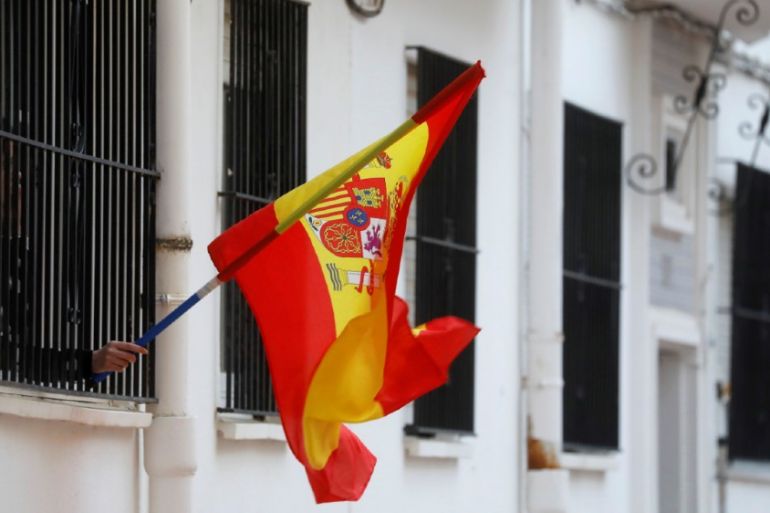Spanish death toll may be much higher than officially reported
‘Pieces of the puzzle will always be missing,’ says one public health expert.

Granada, Spain – Fears of an underestimation of Spain‘s coronavirus death toll have risen sharply this week, amid emerging evidence that mortality rates could be much higher than anticipated.
As of Thursday, Spain already had the greatest total of confirmed coronavirus infections in Europe, with 188,068. It also had Europe’s second-highest death toll, after Italy, with 19,478 fatalities.
Keep reading
list of 3 itemsSpain: Health minister denies requisitioning workers’ virus tests
Pakistani taxi drivers give free rides to Spanish health workers
But while Spain’s central government has previously defended its criteria for its published figures as following World Health Organization guidelines, for days multiple media reports – as well as the opposition – have suggested that the real toll is more severe.
On Friday, Spanish news website El Confidencial claimed at least five major regions, among them Catalonia and Madrid – two of the worst affected by COVID-19 – had not been counting deaths reported outside hospitals in updates sent to central government, even for confirmed coronavirus cases.
The website estimated that another 2,700 deaths could have been included in the official toll.
|
|
Last week, Madrid’s regional government said almost 3,500 people had died in care homes with probable symptoms. But with no tests, the official death toll for the region’s care homes since March 8 remained at 781. More than 7,000 had died in total across the Madrid region as of Friday April 17.
Opposition figures have repeatedly accused the government of hiding the true figures. On Wednesday, Juan Luis Steegmann, an MP with the hard-right Vox party, confronted the health minister over the polymerase chain reaction tests that can tell if a patient currently has the virus, asking: “Thousands of people have died without the PCR tests – who are they?”
The leader of the main opposition party, Pablo Casado, likewise challenged Prime Minister Pedro Sanchez, saying: “Tell us if it is true that the number of coronavirus deaths is double the official figures.”
Catalonia’s president, Quim Torra, meanwhile said he had recently changed data criteria – adding more than 2,000 fatalities to the region’s death total – because “citizens have the right to know what is happening”.
Conflicting criteria
Last week it emerged that civil registries nationwide had been ordered to scour past records of deaths to report possible cases of coronavirus. But with most officials at home under lockdown, computer programmes used for transmitting this data reportedly crashed, jamming fresh updates.
Amid rapidly rising criticism and confusion, on Friday the government confirmed it had asked all regional medical authorities to unify criteria on death tolls and infected cases, something Spanish scientists have repeatedly been demanding.
|
|
“We need everybody to use the same criteria and to do it for a considerable length of time,” Professor Juan Ayllon Barasoain, director of preventative medicine and public health at the University of Burgos, told Al Jazeera.
“It’s not at all useful simply to say, ‘5,000 people have died’ or ‘20,000 people have died’. What’s actually useful is to know how the data is evolving, and to say ‘this number of people have died according to these parameters’. That way we can see if the figures go up, go down or stay level. And decisions can be made about how the pandemic is evolving and what action should be taken.”
On Friday, Spain’s director of health emergencies, Fernando Simon, recognised that conflicting criteria over data for infections, deaths and recovered patients had reached a point where the official records would have to be changed.
The alterations, he said, would take place in “the next few days”. It was yet to be finalised which sources would be used to make those changes.
While arguing it would be almost impossible for the European Union to establish a single series of criteria for the pandemic – “it’s hard enough for the regions within Spain to do it” – Barasoain says the most accurate reflection of the ongoing crisis would be “the number of admissions to intensive care units in hospitals, because there’s no way of changing that number”.
“But,” he warns, “we won’t be able to establish a clear total of coronavirus victims until a considerable amount of time has gone past. And pieces of the puzzle will always be missing.”